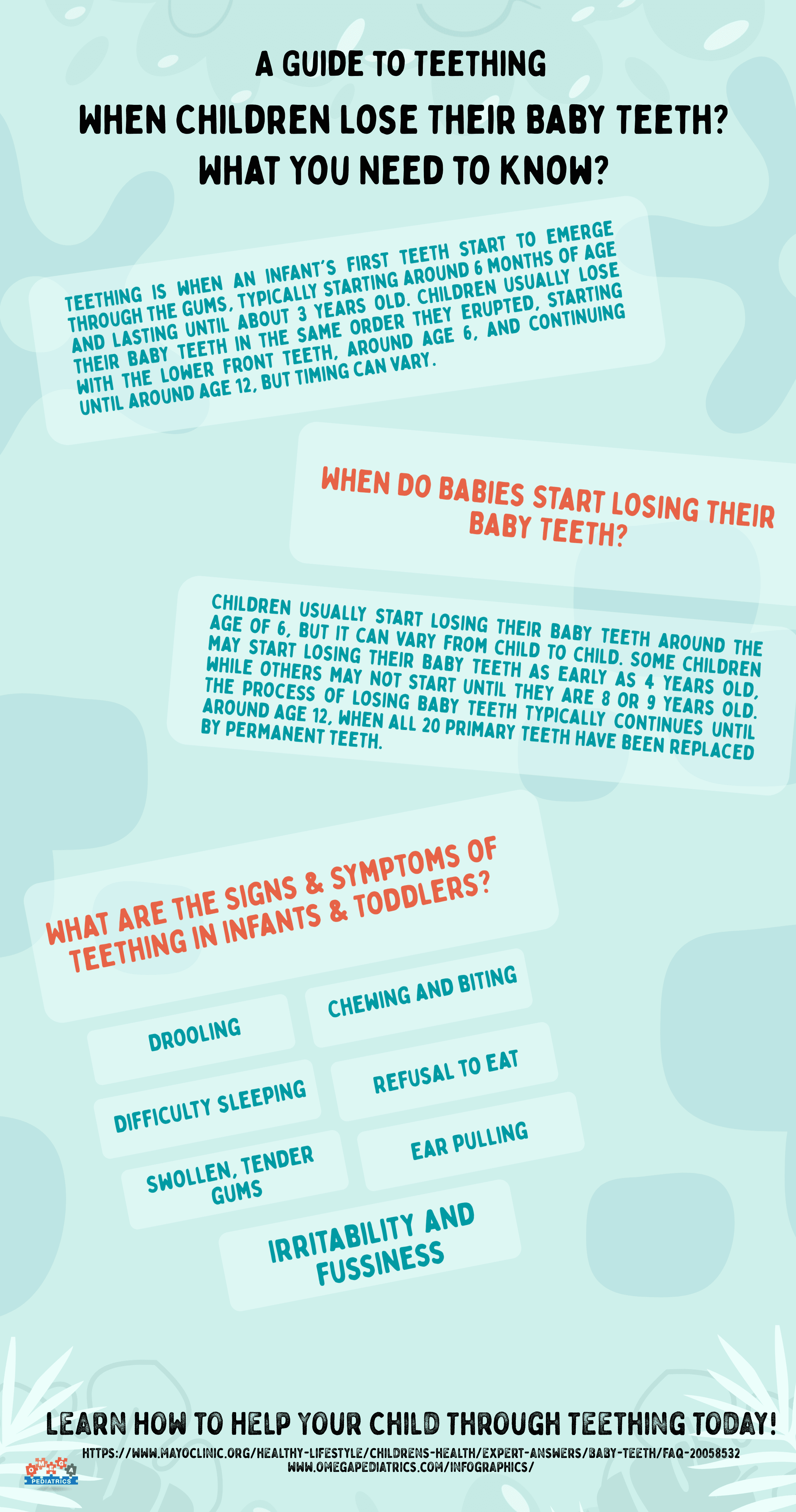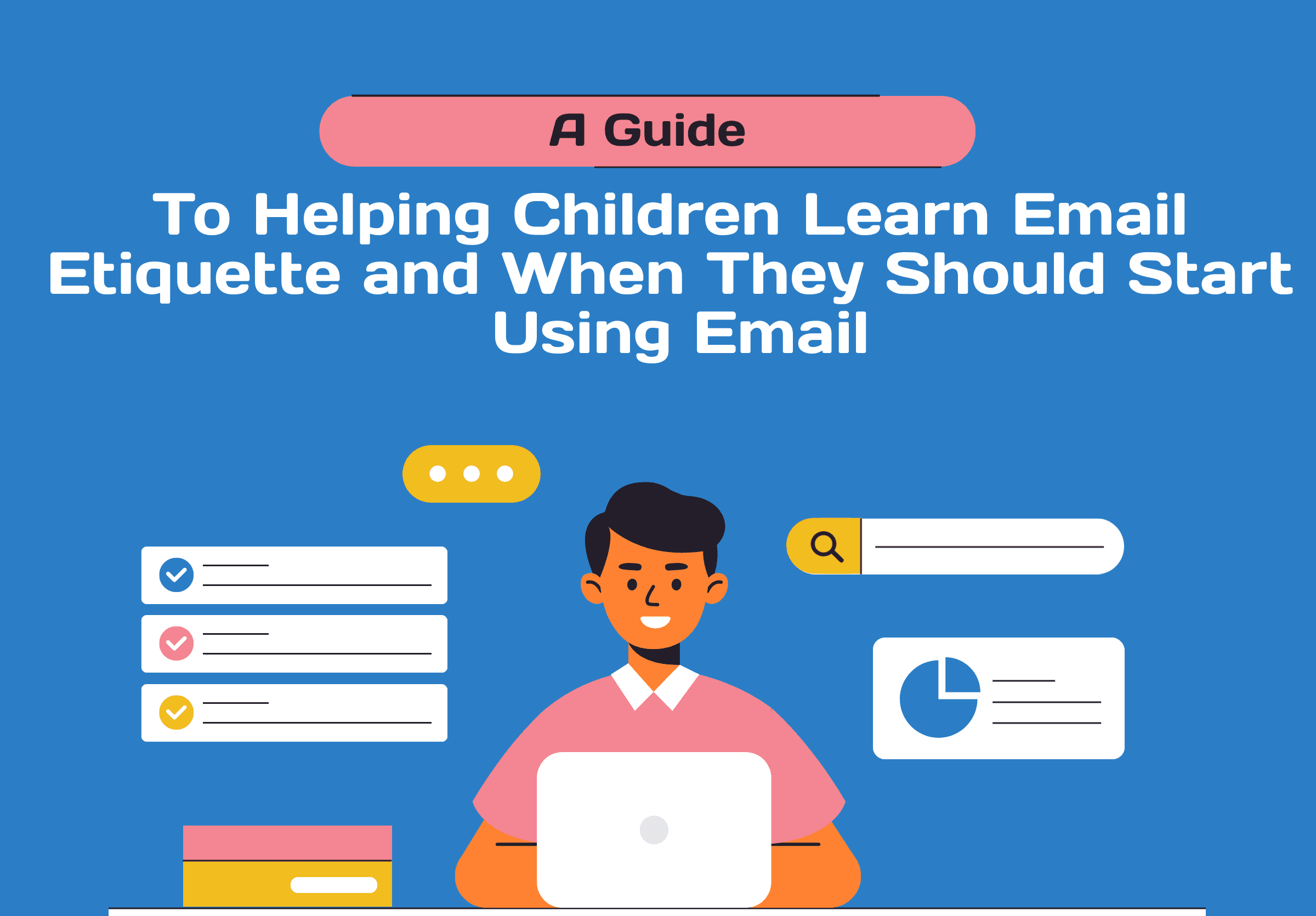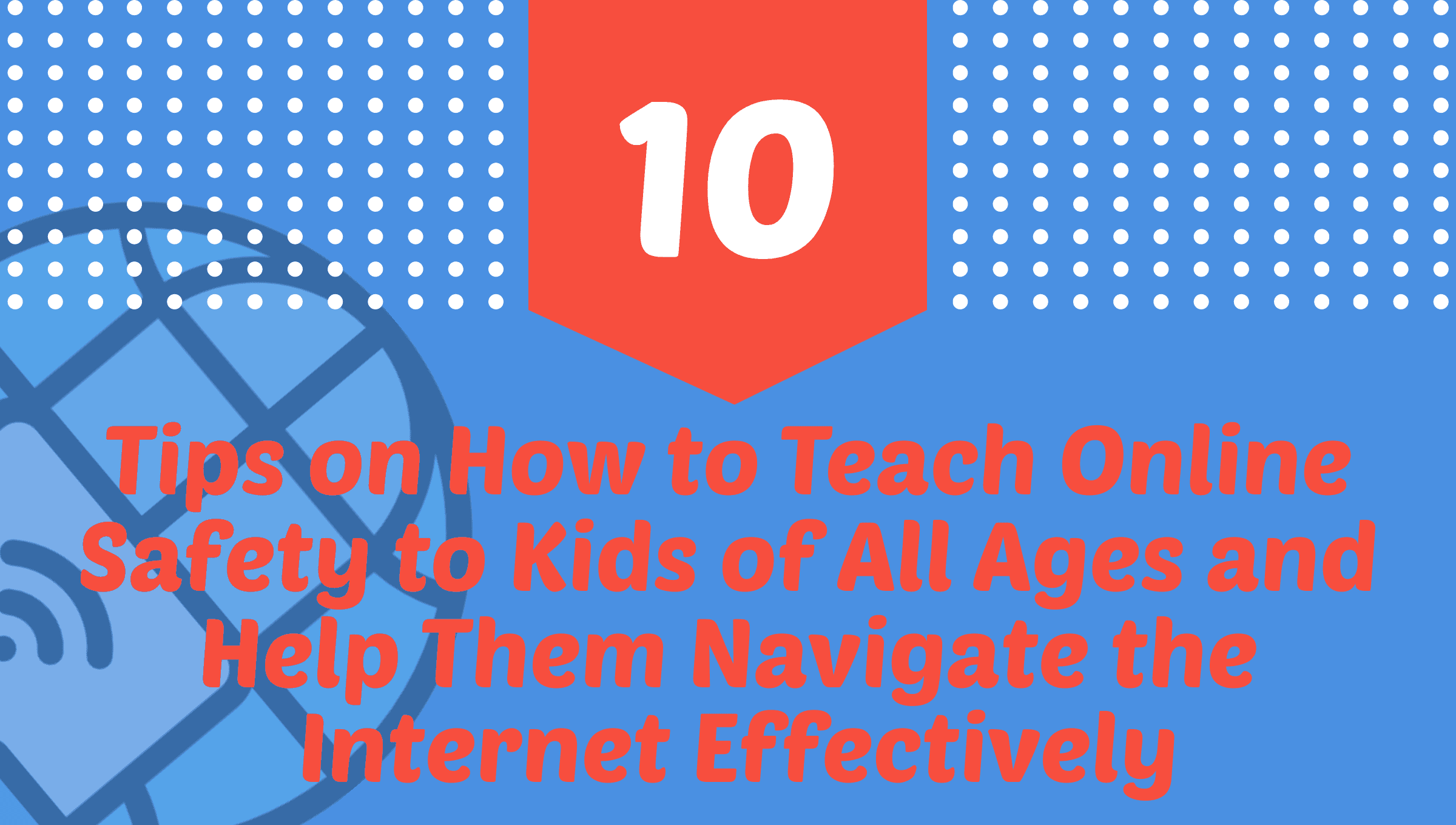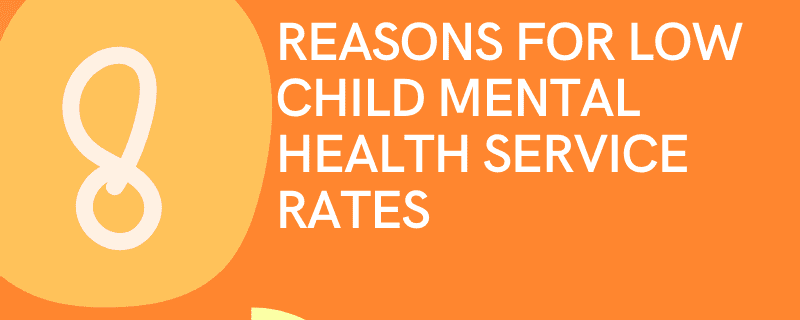Teething is the process by which an infant’s first teeth (also known as baby teeth or milk teeth) start to emerge through the gums. The timing of teething can vary, but it usually starts around 6 months of age and can continue until the child is about 3 years old.
Children typically lose their baby teeth in the same order they erupted, starting with the lower front teeth and followed by the upper front teeth. This process usually begins around age 6 and continues until around age 12, when all 20 primary teeth have been replaced by the permanent teeth. However, the timing can vary from child to child.

What Are the Signs & Symptoms of Teething in Infants & Toddlers?
Teething is a significant developmental milestone for infants, but it often comes with its own set of challenges. As a parent, being able to recognize the signs of teething and knowing how to soothe your baby can make this phase more manageable. Here’s a guide to help you navigate through teething with confidence:
- Drooling: Increased drooling is a common sign of teething, as the baby’s salivary glands become more active.
- Chewing and biting: Infants and toddlers may bite or chew on toys, fingers, or other objects to alleviate the discomfort caused by teething.
- Irritability and fussiness: The pain and discomfort associated with teething can make babies more irritable and fussy than usual.
- Difficulty sleeping: Teething pain can make it difficult for babies to sleep soundly, leading to interrupted sleep patterns.
- Swollen, tender gums: As teeth begin to emerge, the gums can become swollen, red, and tender to the touch.
- Refusal to eat: The pain and discomfort of teething can make it difficult for babies to eat or drink, leading to a decreased appetite.
- Ear pulling: Sometimes teething pain can radiate to the ears, leading to ear pulling or rubbing.
Soothing Tips for Teething Woes:
- Gentle Gum Massage: Using a clean finger or a soft, wet cloth, gently massage your baby’s gums. This can help alleviate some of the discomfort caused by teething.
- Chilled Teething Toys: Cold can be soothing for sore gums. Chill teething toys in the refrigerator (not the freezer) before offering them to your baby. The cool sensation can provide relief.
- Teething Rings: Silicone or rubber teething rings are designed to be safe for babies to chew on. Choose ones that are easy for your baby to hold and have a textured surface to massage their gums.
- Over-the-Counter Teething Gels: Consult with your pediatrician about the use of over-the-counter teething gels. Some can be applied to the gums for temporary relief. Follow the recommended dosage and guidelines.
- Comforting Cuddles: Sometimes, a little extra love and comfort are all your baby needs. Hold and cuddle them to provide reassurance during this potentially unsettling time.
Remember, every baby is unique, and what works for one may not work for another. Pay attention to your baby’s cues, and don’t hesitate to reach out to your pediatrician for personalized advice. With patience and care, you can help ease your baby’s teething discomfort and support them through this important developmental stage.
When Do Babies Start Losing their Baby Teeth?
Children usually start losing their baby teeth around the age of 6, but it can vary from child to child. Some children may start losing their baby teeth as early as 4 years old, while others may not start until they are 8 or 9 years old. The process of losing baby teeth typically continues until around age 12, when all 20 primary teeth have been replaced by permanent teeth.
Conclusion
As your child embarks on the exciting journey of losing baby teeth, remember that each milestone contributes to their unique smile journey. By embracing the Tooth Fairy tradition, fostering a positive atmosphere around tooth loss, and maintaining vigilant oral hygiene practices, you actively participate in shaping your child’s dental health. This journey is a blend of excitement, tradition, and the promise of a bright, healthy smile for years to come.



